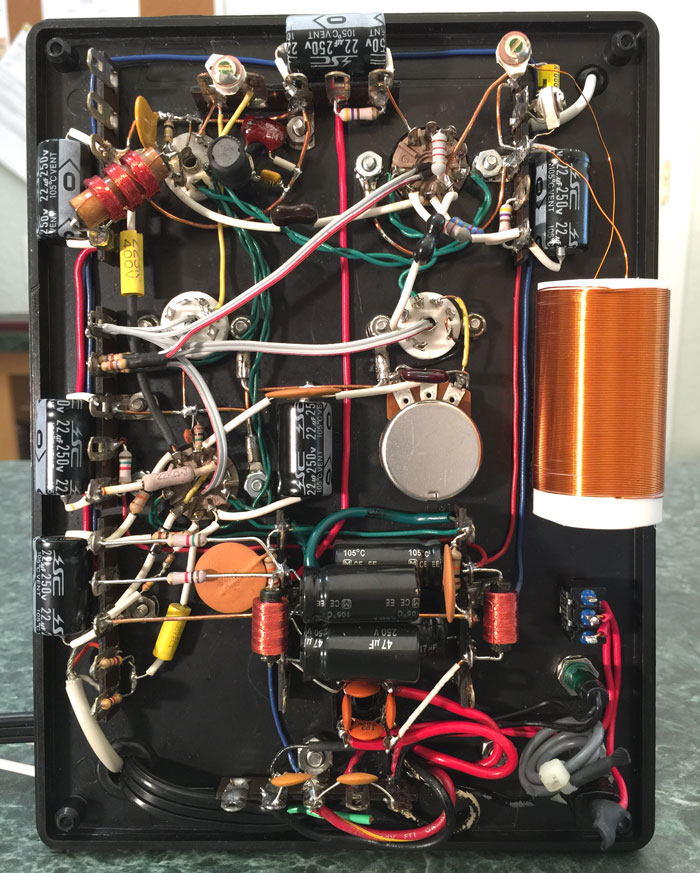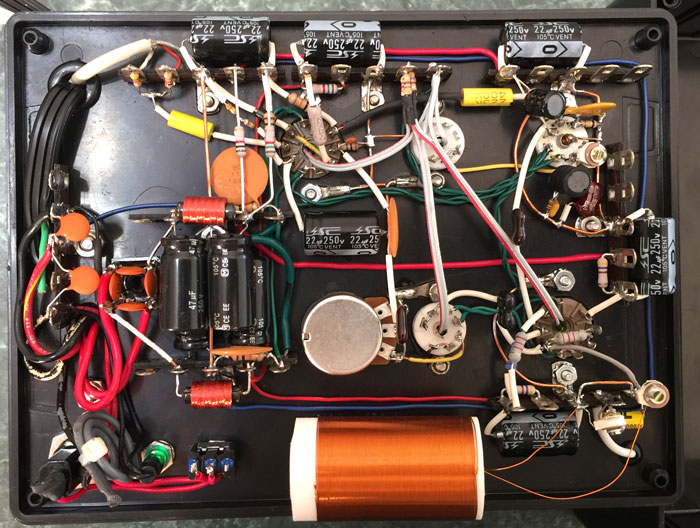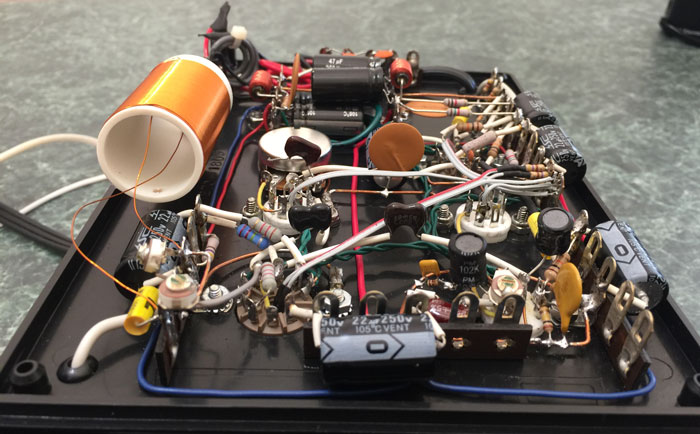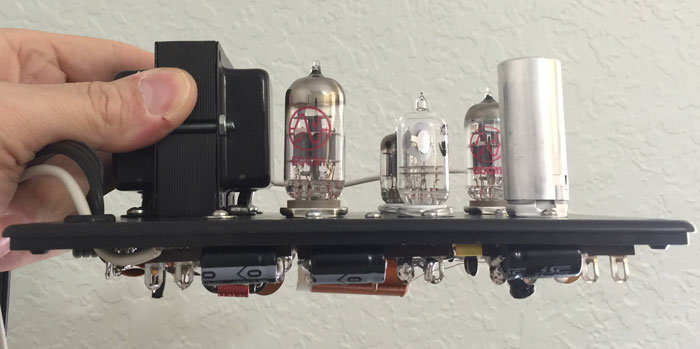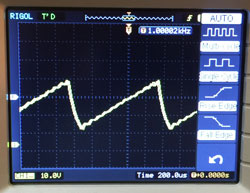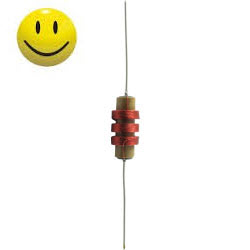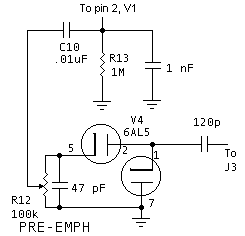New 6v Tube lineup - 12AT7, 6GY6, 12AU7, 6AL5
The real difference/s between Fred Nachbaur's "Goldberg" original and this redesign:
- Replaced the 6BE6 with a 6GY6. The 6GY6 oscillator is a sharp-cutoff pentode tube with dynamic sound quality that's superior to the 6BE6.
- I've given you a second (optional) RF Output stage. It has more output power than the original and sounds fantastic. See the second schematic below.
- Replaced the HC51U, metal can crystal. Now using
a Soviet built 1000khz crystal vacuum tube.
The vacuum tube crystal connects up without any circuit changes being made. This adds a really cool look to the transmitter and it performs very well. - To improve the quality and linearity, I've updated
the oscillator circuit.
- I've modified the common-cathode amplifier by adding
one additional component.
(Regarding this addition please see the "Modifications section" below.) - I added the two capacitors to the feedback circuit which allows the potentiometer to act more like a pre-emphasis control. This was mentioned by Fred in his original posting. I find after adding these components, that it maintains its linearity and accomplishes the stated goal nicely. However, after listening to this for a while, I removed these capacitors. I find that I prefer listening to it without this modification.
- I've upgraded the split bi-polar power supply. For good measure, I've added two chokes and two additional filter capacitors.
- The two resistors & two capacitors in the filament circuit helps eliminate hum injection and cathode RF leakage.
- I've simplified the RF output, using a 100uh RF choke, and tuning the RF output with the variable 50pf capacitor on the antenna side.
- Now using a single power transformer: Hammond 269AX
- This TX is built on a project box that is 6"x 8".
Final thoughts:
This is a real nice TX. It is a bit more complex to build, but the end result is satisfying. Fred, said that his Goldberg is best peaked/tuned with an oscilloscope. I would agree with this.
Fred said it was the only one he listened to after building his original. With the modifications I've made to linearize the audio even more, I can only believe this new "-revisit-" would have improved the experience.
![]()
Check out the video at the bottom. ![]()




